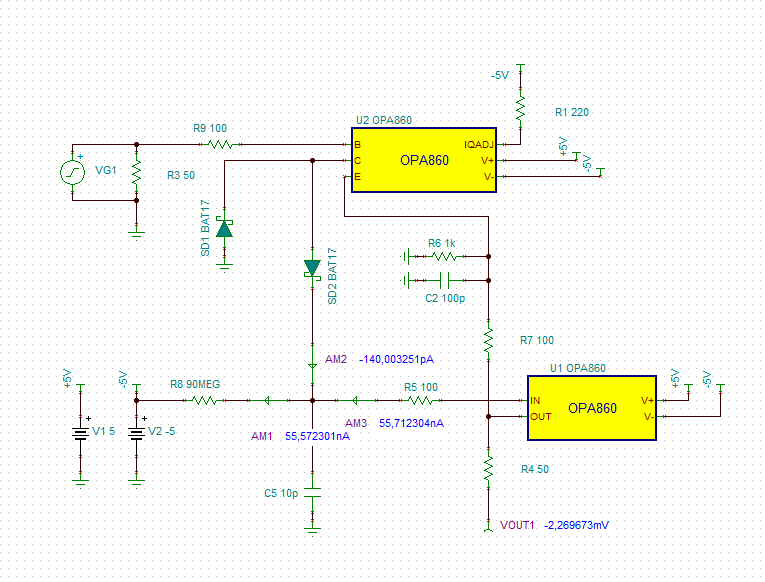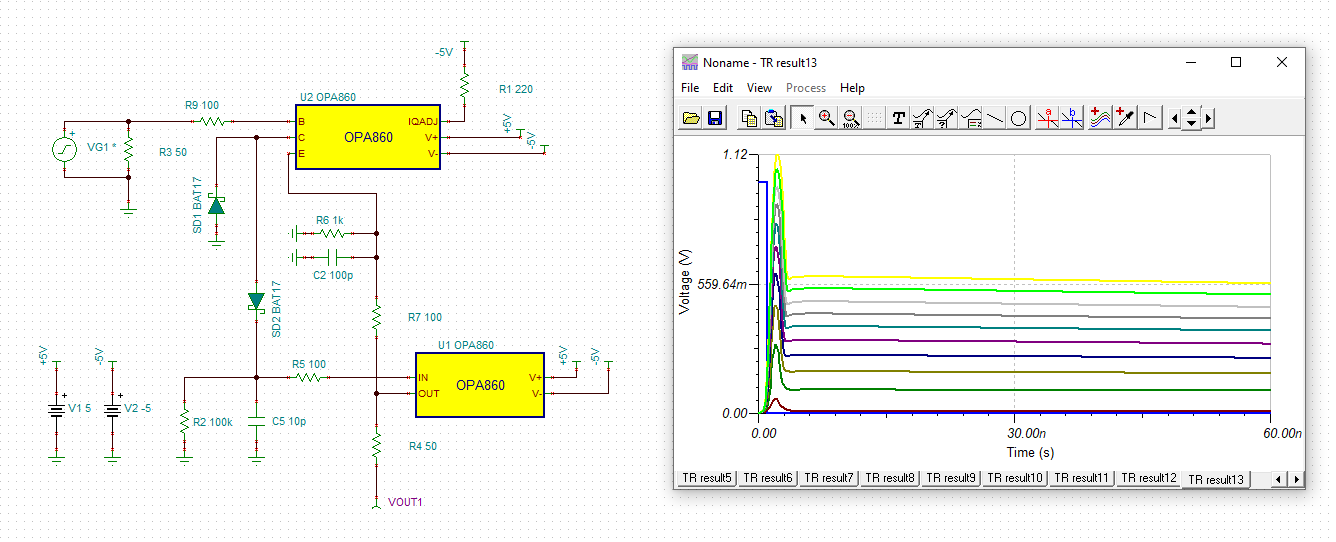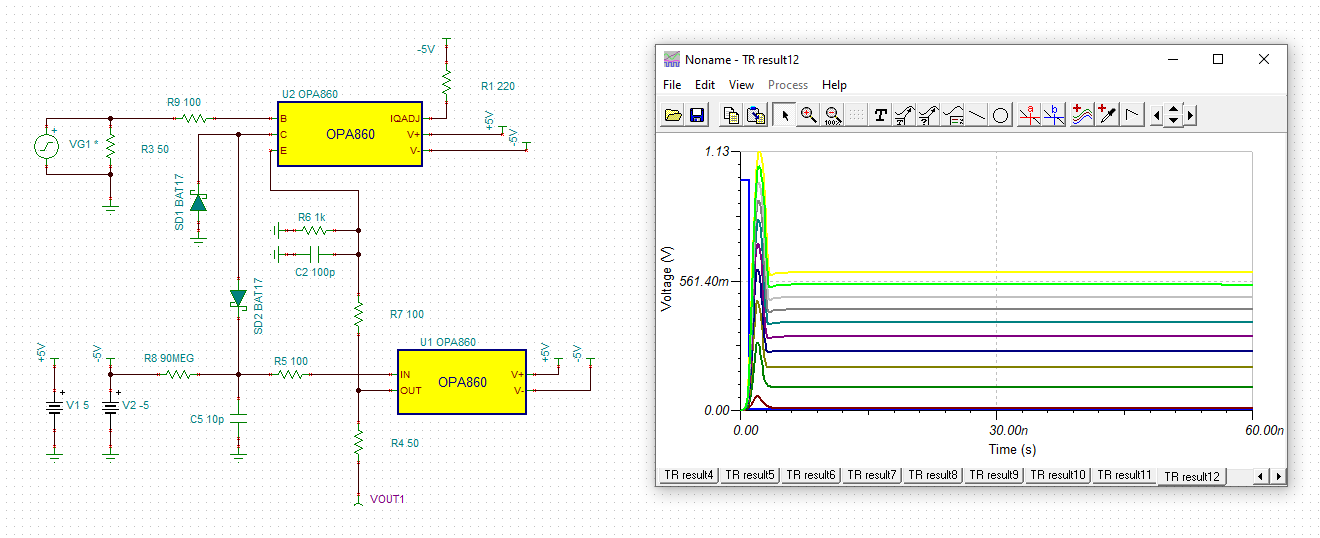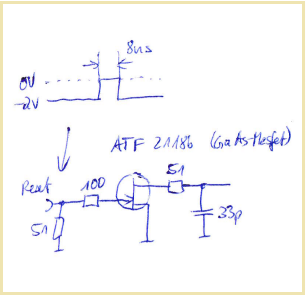Hi team,
One of our customer's issues, could you please provide some troubleshooting suggestions
The customer made a circuit board based on the circuit in the post below (from Kai) and after testing found that the output was around 3.8V regardless of the input signal. Could you help analyze the cause of the problem?
The diode part number used in the figure is SMS3922-001LF.
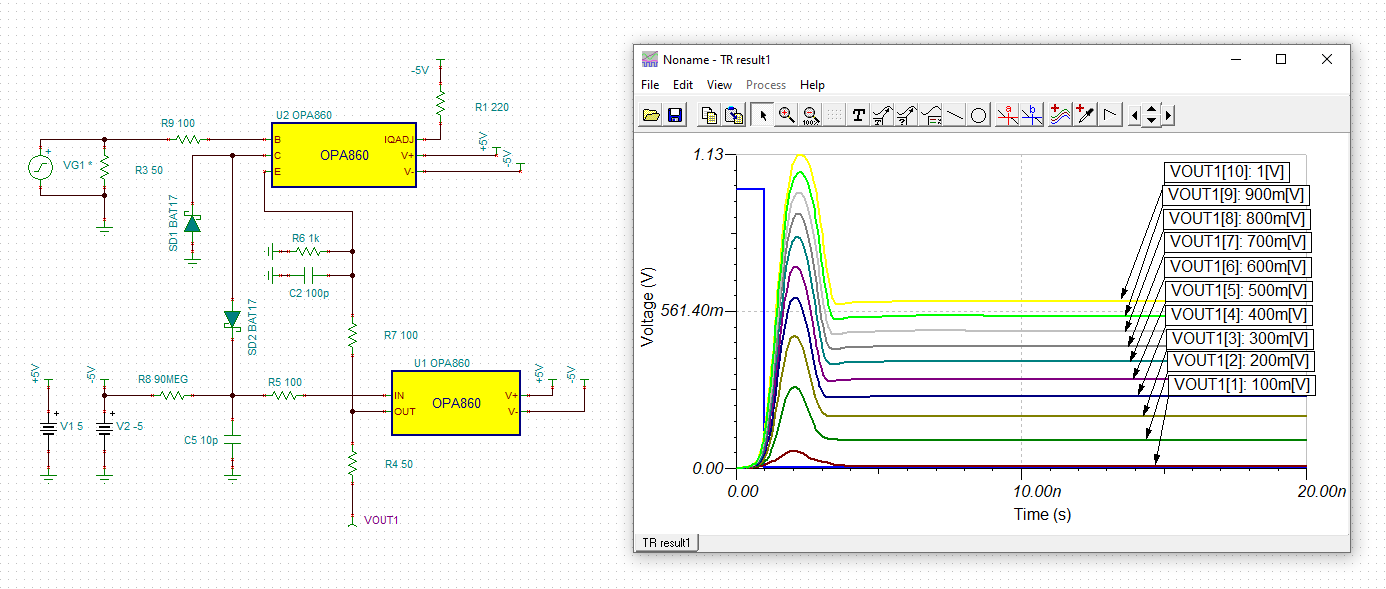
Best Regards,
Amy Luo



